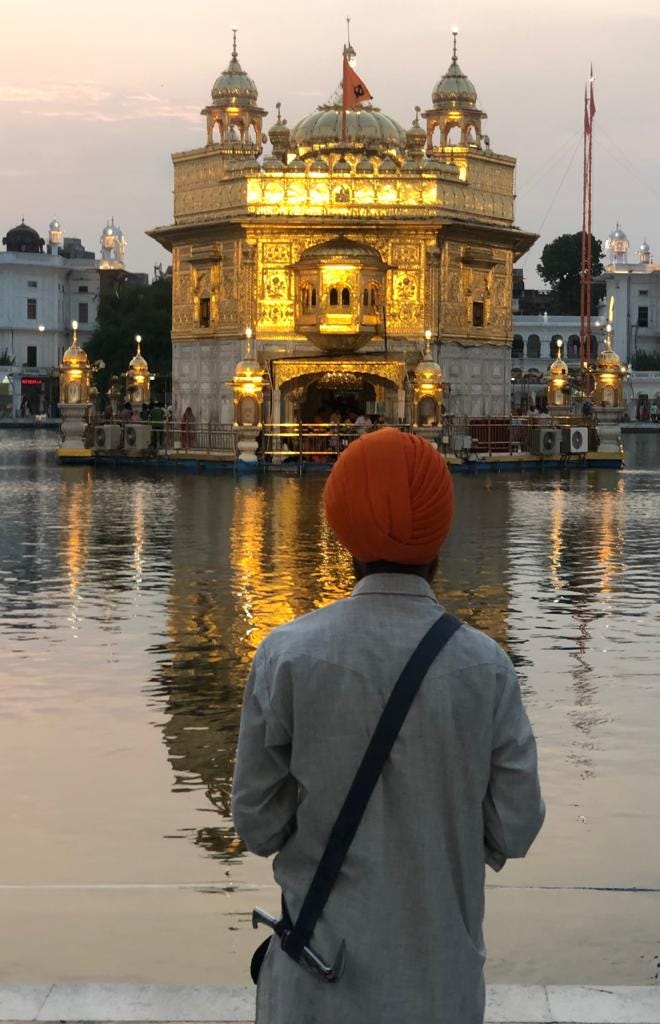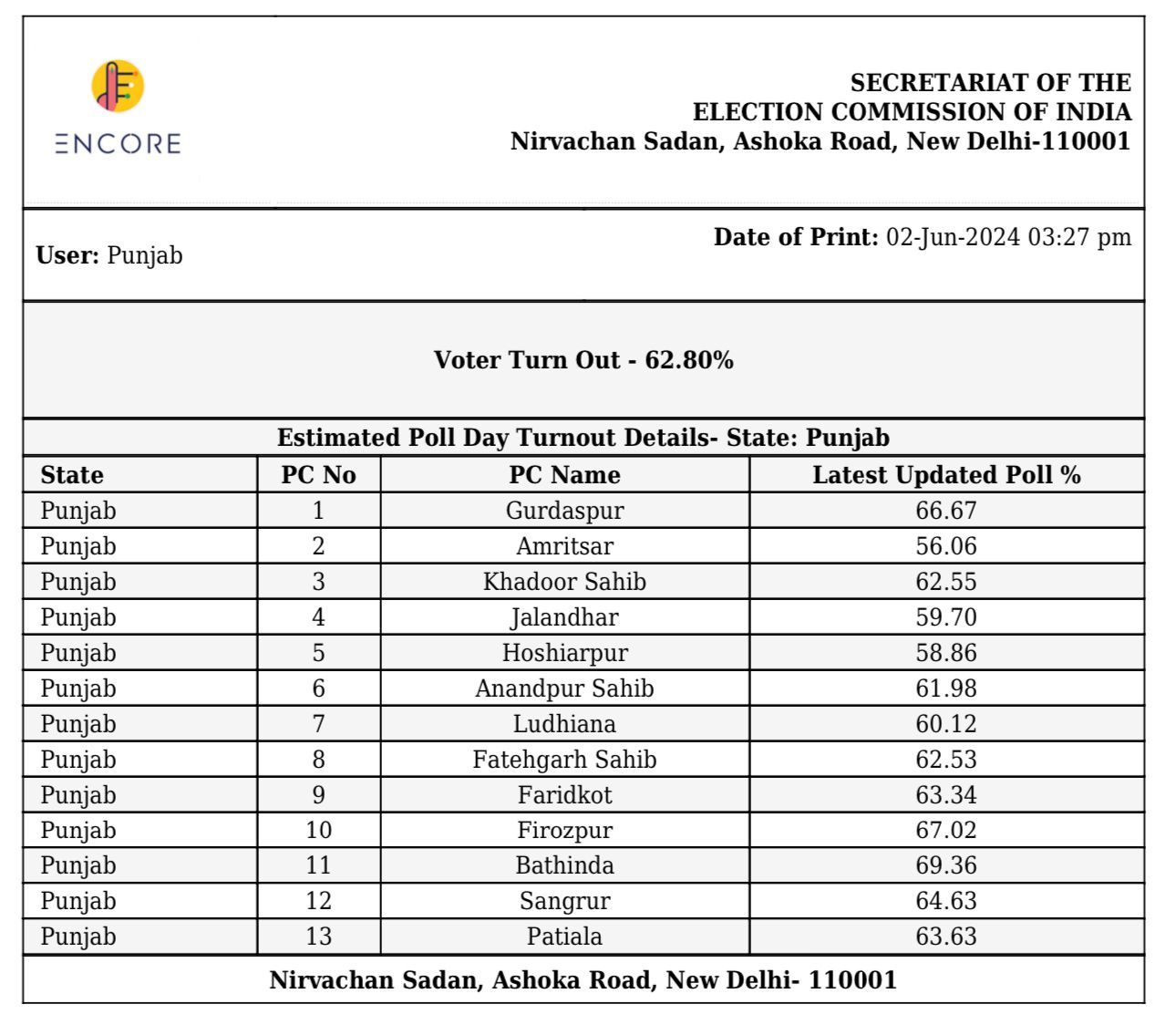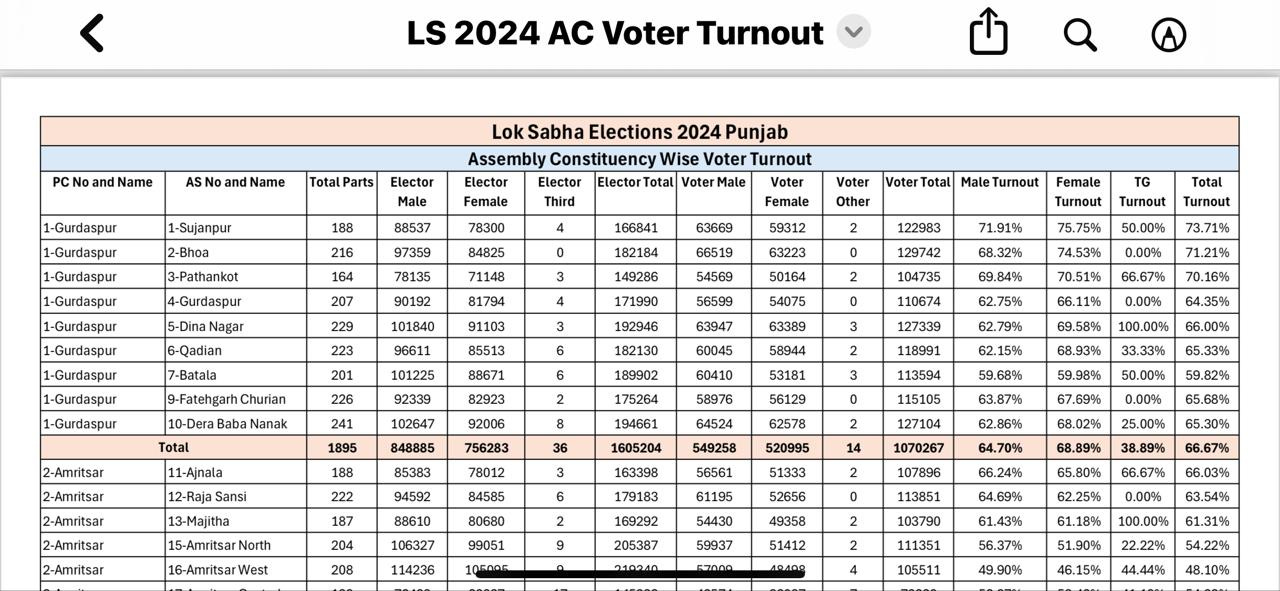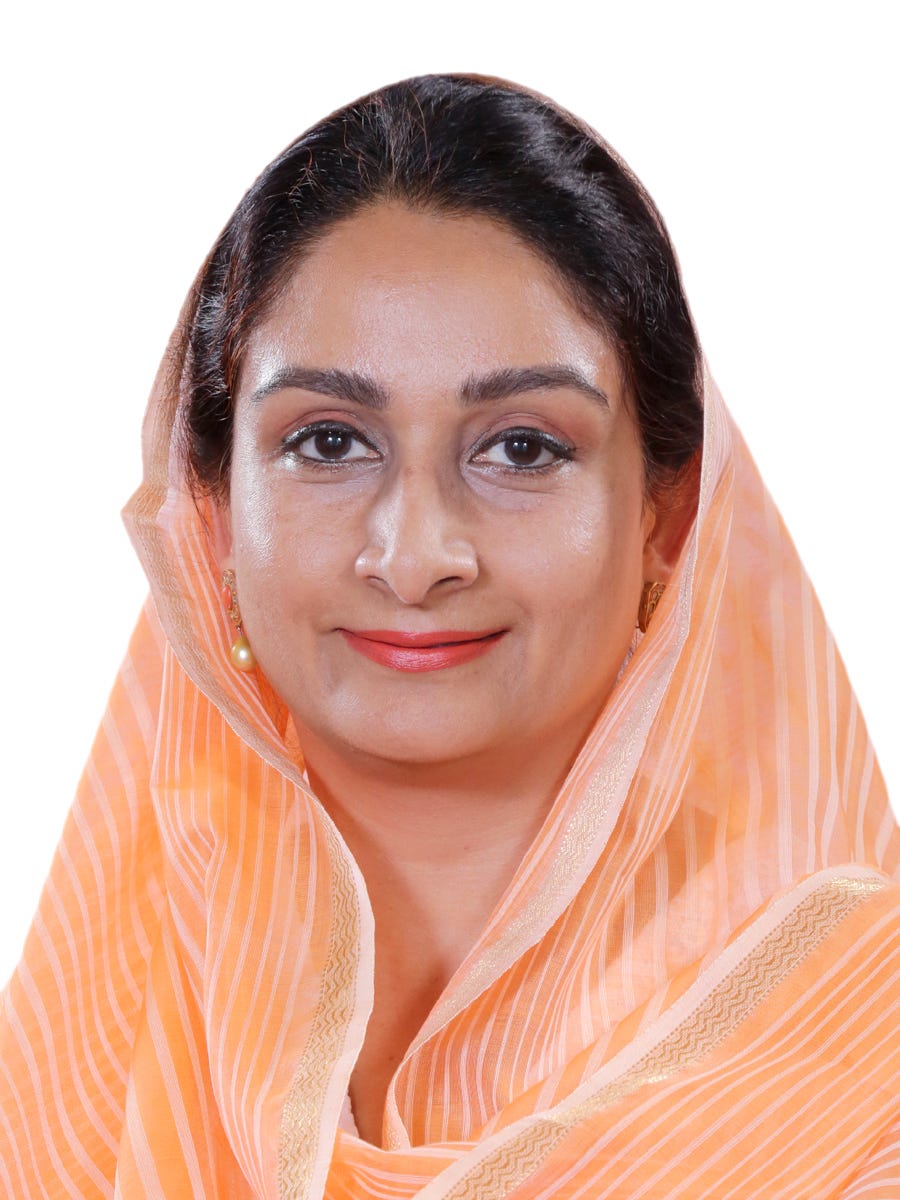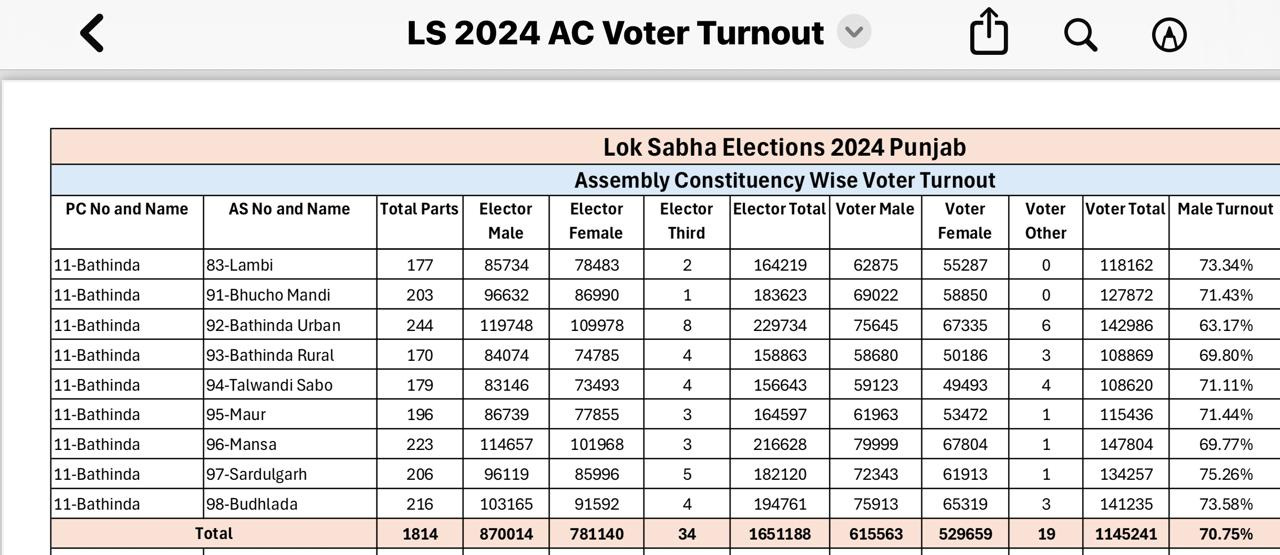Punjab Lok Sabha, Assembly Segment-wise Election Turnout Analysis
Small towns and urban centres, in contrast to the big cities, have shown disproportionately higher polling than rural areas, thanks to the massive grassroots efforts by the BJP cadres.
Moderate Voter Turnout
The voting in Punjab for the Lok Sabha elections witnessed a moderate turnout of 62.80%, according to statistics released by the Election Commission of India (ECI) on 02-Jun-2024 evening. These figures, despite record-breaking temperatures on polling day, reflect a heightened level of political engagement across the state. Notably, Punjab saw credible quadrangular contests in all 13 Lok Sabha seats, and five-cornered contests in Khadoor Sahib, Sangrur, and Faridkot (SC).
Urban Centres and Small Towns Lead
Detailed assembly segment-wise figures for Punjab reveal that urban centres, small towns, and cities have shown disproportionately higher polling compared to rural areas. This marks a reversal from previous trends, where polling was generally higher in rural areas. This change can be attributed to the massive grassroots efforts by the BJP cadres.
Gurdaspur Constituency Insights
This trend is particularly evident in the Gurdaspur constituency, where segments like Sujanpur (73.71%), Bhoa (71.21%), and Pathankot (70.16%)—Hindu-majority areas—showed substantially higher turnout compared to rural segments (details in the figure below). The overall turnout for Gurdaspur was 66.67%, well above the state average of 62.80%, and ranked third after Bathinda (69.36%) and Firozpur (67.02%).
Mixed Results in Major Urban Areas
However, major urban areas like Amritsar (56.06%), Ludhiana (60.12%), and Jalandhar (59.70%) saw only moderate turnout. Notably, the prestigious constituency of the Golden Temple exhibited the lowest poll percentage in the state. This mixed result may not bode well for the urban-oriented BJP, which is trying its best, riding the Ram Mandir wave, to wrest control of these big cities in Punjab without any alliance with the Shiromani Akali Dal, as in previous elections.
The Bathinda Exception— highest turnout in the state
Bathinda stands out as an exception to the overall trend. Bathinda experienced an exceptionally high turnout of 69.36%. Although the highest in the state, it still did not breach the 70% mark in a scenario of moderate turnout. This anomaly is largely due to the intense contest involving Harsimrat Kaur Badal, the Shiromani Akali Dal candidate and wife of the SAD supremo, Sukhbir Badal, who is fighting to retain her seat for a fourth consecutive term. The high voter engagement underscores the competitive nature of this race. The assembly segments of Sardulgarh, Budhlada, Lambi, and Maur—predominantly rural constituencies—returned a turnout of over 70%.
Importance of Voter Mobilisation
While the results will be known by the evening of 4th June, the turnout mobilised by the respective political parties will play a significant role in a scenario of low turnout and multi-cornered contests. This serves as an invaluable lesson to political parties and candidates that the entire momentum of the campaign will yield positive dividends only if voters and supporters actually go out and vote on polling day. This mobilisation can make all the difference between victory and defeat, emphasising the crucial role of voter engagement.
Summing Up
The overall increase in voter turnout in Punjab highlights a dynamic political environment and successful efforts by political parties to engage voters. The final results, including the winners, will be known by the afternoon of 4th June when counting takes place. Further analysis of the assembly segment-wise votes polled by each party will provide deeper insights into the psyche of the Punjab voter.
For detailed figures across all 13 Lok Sabha constituencies and 117 Vidhan Sabha segments, please visit the Google Drive link.




